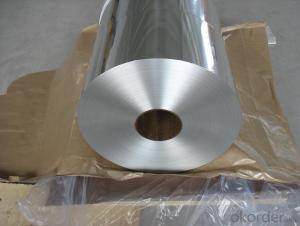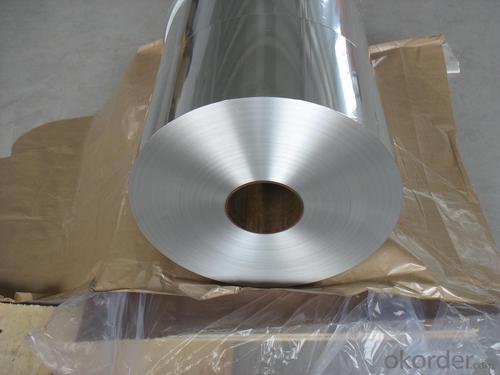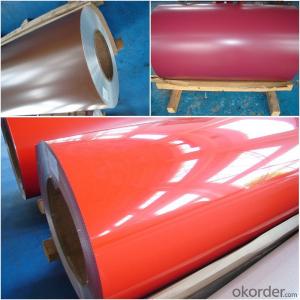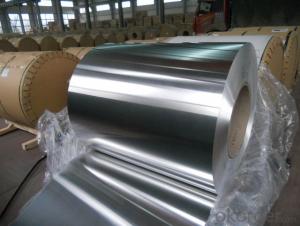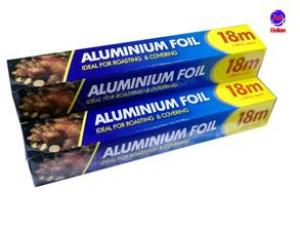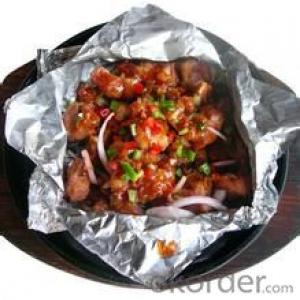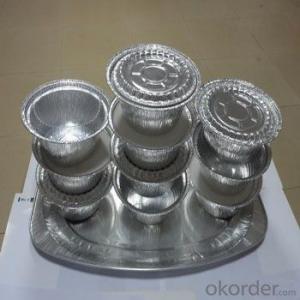3M Damping Aluminum Foam Sheets 4014 for Family Barbecue Aluminium Household Foil
- Loading Port:
- Shanghai
- Payment Terms:
- TT OR LC
- Min Order Qty:
- 5 m.t.
- Supply Capability:
- 1000 m.t./month
OKorder Service Pledge
OKorder Financial Service
You Might Also Like
Specification
Structure of Aluminium Household Foil for Family BarbecueDescription:
Coated aluminum coil/sheet are of a wide range of colors, which gives wonderful appearance no matter in residential and commercial constructions of great exhibition centers.
The coated aluminum coil/sheet have been widely used in the fields of construction and decoration( garage doors, ceiling etc.), electronic appliances, lighting decoration, air-condition air pipes, sandwich panels and drainages etc.
Main Features of Aluminium Household Foil for Family Barbecue:
1) High flexibility
2) Impact resistance
3) Excellent weather-proof durability
4) Anti-ultraviolet
5) High erosion resist
Images of the Aluminium Household Foil for Family Barbecue:
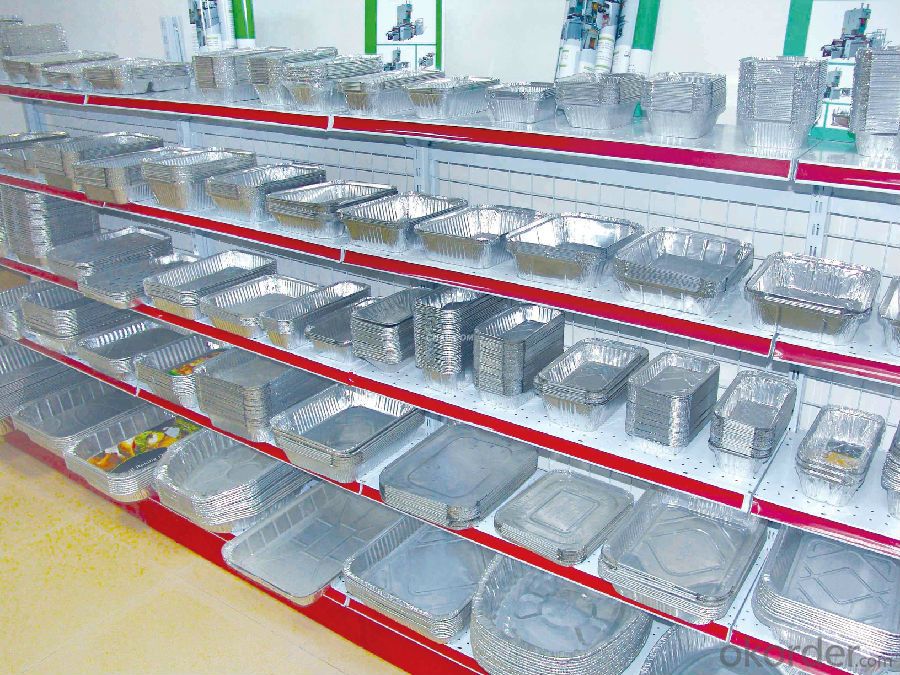
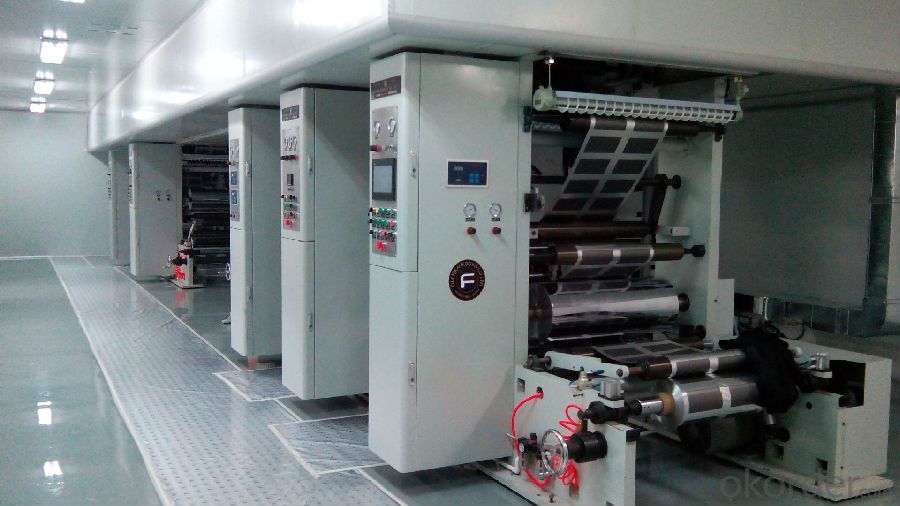
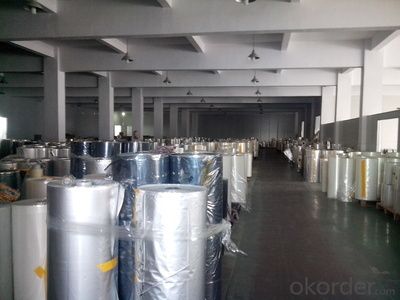
Aluminium Household Foil for Family Barbecue Specification:
Alloy | A1100,A3003,A1050,A8011 etc |
Temper | H16,H18,H24 |
Thickness | From 0.024mm to 1.2mm |
Width | Standard width:1240mm |
Special width:1300mm,1520mm,1570mm,1595mm | |
Diameter | Standard dia:1200mm |
Interior dia:150mm,405mm,505mm | |
Weight | 2.5 T/coil,3.0 T/coil |
Coating | PE, PVDF, AC |
Surface | Embossed, mill finish, coated |
Color | AS to code RAL |
Gloss | 10-90%(EN ISO-2813:1994) |
Coating Thickness | PE: more than 18 micron |
PVDF: more than 25 micron | |
Coating Hardness (pencil resistance) | More than 2h |
Coating adhesion | 5J(EN ISO-2409:1994) |
Impact Resistance | No peeling or cracking(50 kg/cm,ASTMD-2794:1993) |
Flexibility (T-bend) | 2T |
MEK resistance | More than 100 |
FAQ Aluminium Household Foil for Family Barbecue:
a.What is monthly capacity
---CNBM is one stated own company and our monthly capacity is about 2000tons.
b. Now which countries do you export your goods?
---Now we export to South East Asia,Africa, North America,South America ect.
- Q: What kind of material is wood grain aluminum sheet?
- The wood grain is sprayed, and the key is what you do. It's good to tell you which kind of material is used.
- Q: 6061 what is the density of the aluminum plate?
- 6061 aluminum plate density:6061 aluminum plate is aluminum alloy, the density is calculated according to 2.9g/cm3.Calculation method:Aluminium plate weight (kg) =0.0000029 * * * * width * lengthAluminium tube weight (kg) =0.0000029 * wall thickness * (outside diameter wall thickness) * lengthFormula for weight calculation of aluminium bars (kg) =0.0000029 * radius * radius * length
- Q: What precautions should be taken to ensure safety while installing aluminum sheets?
- <p>When installing aluminum sheets, safety measures include wearing appropriate personal protective equipment (PPE) such as gloves, safety glasses, and hard hats. Ensure the work area is clear of debris and any tripping hazards. Use ladders and scaffolding that are in good condition and set up correctly. Always have a spotter when lifting heavy sheets and use proper lifting techniques to avoid back injuries. Keep hands and feet away from edges and corners to prevent cuts. Ensure all tools are in good working order and use them correctly. Follow all manufacturer's guidelines for installation and adhere to local safety regulations.</p>
- Q: Explain the various types of coatings that can be applied to aluminum sheets.
- <p>Aluminum sheets can be coated with several options to enhance their appearance, durability, and functionality. These include: 1) Anodizing, which creates a protective oxide layer, 2) Powder coating, offering a wide range of colors and textures, 3) Liquid painting, for a smooth, painted finish, 4) Laminating, which bonds a protective film to the surface, 5) Electrolytic coloring, resulting in a variety of colors, 6) PVD (Physical Vapor Deposition), for a high-quality, durable finish, and 7) Thermal spraying, applying a coating to improve wear resistance. Each method serves different purposes and has its advantages and limitations.</p>
- Q: Can the aluminum sheets be used for manufacturing audio amplifier cases?
- Yes, aluminum sheets can be used for manufacturing audio amplifier cases. Aluminum is a popular choice for casing in audio equipment due to its lightweight yet durable properties. It provides excellent heat dissipation, which is crucial for audio amplifiers that generate heat during operation. Furthermore, aluminum can be easily machined and formed into various shapes, allowing for customization and aesthetics in the design of the amplifier case. Overall, aluminum sheets are a suitable material for manufacturing audio amplifier cases.
- Q: What are the different methods of cutting aluminum sheets?
- There are several methods that can be used to cut aluminum sheets, depending on the specific requirements and the thickness of the material. Some of the most commonly used methods include: 1. Shearing: This method involves using a shearing machine to cut straight lines in the aluminum sheet. The machine applies a force to a blade, which then cuts through the material. Shearing is a quick and efficient method for cutting aluminum sheets, especially for thinner gauges. 2. Sawing: Sawing is another common method used to cut aluminum sheets. It involves using a circular saw or a bandsaw with a special blade designed for cutting metal. This method is ideal for thicker aluminum sheets, as it allows for more precision and controlled cuts. 3. Laser cutting: Laser cutting is a highly precise and efficient method for cutting aluminum sheets. It uses a concentrated beam of light to melt and vaporize the material, creating a clean and smooth cut. Laser cutting is particularly useful for intricate designs or complex shapes. 4. Waterjet cutting: Waterjet cutting involves using a high-pressure stream of water mixed with abrasive particles to cut through aluminum sheets. This method is suitable for various thicknesses and can achieve precise cuts without generating heat. Waterjet cutting is often used for thicker aluminum sheets or when high precision is required. 5. Plasma cutting: Plasma cutting uses a high-temperature plasma torch to melt and cut through aluminum sheets. The torch generates an electric arc that ionizes the gas, creating a plasma state. This method is versatile and can cut through different thicknesses of aluminum sheets, but it may result in rougher edges compared to laser or waterjet cutting. It is important to consider the specific requirements of the project, such as the desired cut quality, speed, and complexity, when choosing the most appropriate method for cutting aluminum sheets.
- Q: What are the different methods for punching aluminum sheets?
- There are several different methods for punching aluminum sheets, each with its own advantages and applications. Some of the common methods include: 1. Manual Punching: This method involves using hand-operated tools such as handheld punches or hole punches to manually create holes or shapes in the aluminum sheet. It is suitable for small-scale or low-volume production and provides flexibility in terms of hole size and shape. 2. Mechanical Punching: Mechanical punching involves the use of a mechanical press machine equipped with a punch and die set. The sheet is fed into the machine, and the punch is driven through the material, creating holes or shapes. This method is faster and more efficient than manual punching and is suitable for medium to high-volume production. 3. CNC Punching: Computer Numerical Control (CNC) punching utilizes automated machinery that is programmed to punch holes or shapes based on a digital design. The aluminum sheet is loaded onto the machine, and the CNC controls the movement of the punch and die to create precise and complex patterns. CNC punching offers high accuracy, repeatability, and speed, making it ideal for high-volume production and intricate designs. 4. Laser Punching: Laser punching combines the use of a laser cutter and a mechanical punch to create holes or shapes in aluminum sheets. The laser beam vaporizes or melts the material, while the punch pushes the cut part out of the sheet. This method offers high precision, versatility, and the ability to cut complex shapes quickly. However, it is typically more expensive and time-consuming compared to other methods. 5. Notching: Notching is a method used to create V-shaped or U-shaped cuts in aluminum sheets. It is often used for joining or folding the material to form corners or edges. Notching can be done manually or with the help of a mechanical notching machine. The choice of punching method depends on various factors such as the desired hole size and shape, production volume, precision requirements, complexity of design, and budget. It is essential to consider these factors and consult with experts to determine the most suitable method for punching aluminum sheets based on specific needs and applications.
- Q: Are aluminum sheets suitable for food storage applications?
- Yes, aluminum sheets are suitable for food storage applications. Aluminum is a widely used material in the food industry because it is lightweight, durable, and has excellent thermal conductivity properties. Aluminum sheets are often used to make food storage containers, foil wrap, and trays. These sheets provide an effective barrier against moisture, oxygen, and light, which helps to preserve the freshness and quality of food. Additionally, aluminum is non-toxic and does not react with acidic or alkaline food, ensuring that the taste and safety of the stored food are not compromised.
- Q: What are the different methods of surface cleaning aluminum sheets?
- There are several different methods for surface cleaning aluminum sheets, including chemical cleaning, mechanical cleaning, and electrolytic cleaning. Chemical cleaning involves using solutions or acids to remove dirt, oxidation, or other contaminants from the surface of the aluminum. Mechanical cleaning involves scrubbing or abrasive techniques to physically remove dirt or grime from the surface. Electrolytic cleaning utilizes an electric current and an electrolyte solution to remove contaminants and create a clean surface on the aluminum sheets.
- Q: What are the applications of aluminum sheet?
- Due to their unique properties and versatility, aluminum sheets have a wide range of applications. Some common uses include: 1. Construction: In the construction industry, aluminum sheets are widely utilized for roofing, siding, and cladding purposes. Their lightweight nature allows for easy handling and installation, while their corrosion resistance ensures durability over time. 2. Transportation: Aluminum sheets play a crucial role in the automotive industry by being extensively used in manufacturing vehicle bodies, panels, and structural components. Their high strength-to-weight ratio helps reduce overall vehicle weight, leading to increased fuel efficiency and improved performance. 3. Packaging: Within the packaging industry, aluminum sheets are commonly employed in the production of cans, foils, and containers. Aluminum foils, in particular, are utilized for food packaging as they provide a protective barrier against moisture, light, and oxygen, ensuring the freshness and safety of packaged products. 4. Electrical: The electrical industry relies on aluminum sheets for manufacturing power transmission lines, busbars, and electrical enclosures. Their excellent electrical conductivity aids in the efficient transmission of electricity, while their corrosion resistance allows for longevity in outdoor applications. 5. Marine: The marine industry extensively utilizes aluminum sheets for manufacturing boat hulls, decks, and superstructures. Their resistance to corrosion from saltwater makes them ideal for marine applications, and their lightweight nature helps reduce overall vessel weight. 6. Aerospace: In the aerospace industry, aluminum sheets are widely used for manufacturing aircraft and spacecraft components. Their high strength-to-weight ratio and excellent thermal conductivity make them suitable for applications where weight reduction and heat dissipation are critical. 7. Heat exchangers: Aluminum sheets are crucial in the manufacturing of heat exchangers, such as radiators and condensers. Their high thermal conductivity allows for efficient heat transfer, making them ideal for applications that require heat exchange. 8. Decorative: Aluminum sheets also find common use in interior design and architectural applications for decorative purposes. They can be easily shaped, bent, and formed into various designs, adding a modern and aesthetic appeal to buildings and interiors. In summary, aluminum sheets are extensively utilized in various industries due to their lightweight nature, corrosion resistance, high strength-to-weight ratio, and excellent thermal conductivity.
Send your message to us
3M Damping Aluminum Foam Sheets 4014 for Family Barbecue Aluminium Household Foil
- Loading Port:
- Shanghai
- Payment Terms:
- TT OR LC
- Min Order Qty:
- 5 m.t.
- Supply Capability:
- 1000 m.t./month
OKorder Service Pledge
OKorder Financial Service
Similar products
Hot products
Hot Searches
Related keywords
